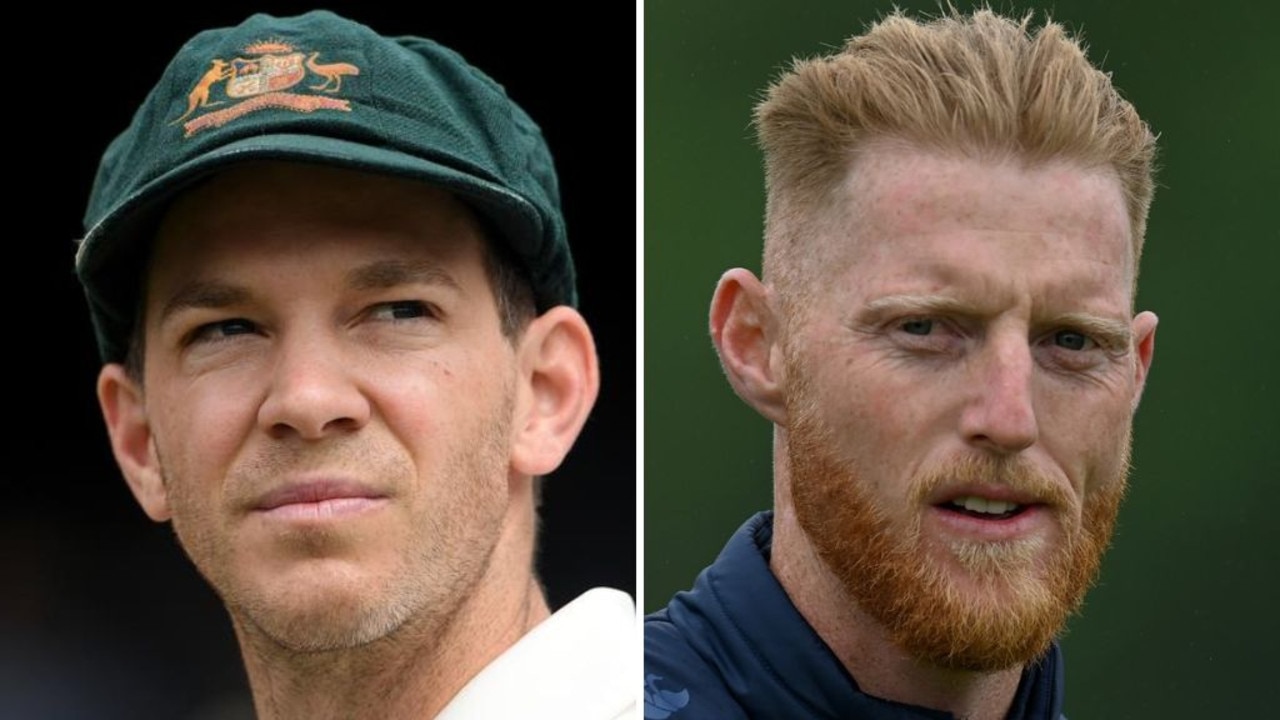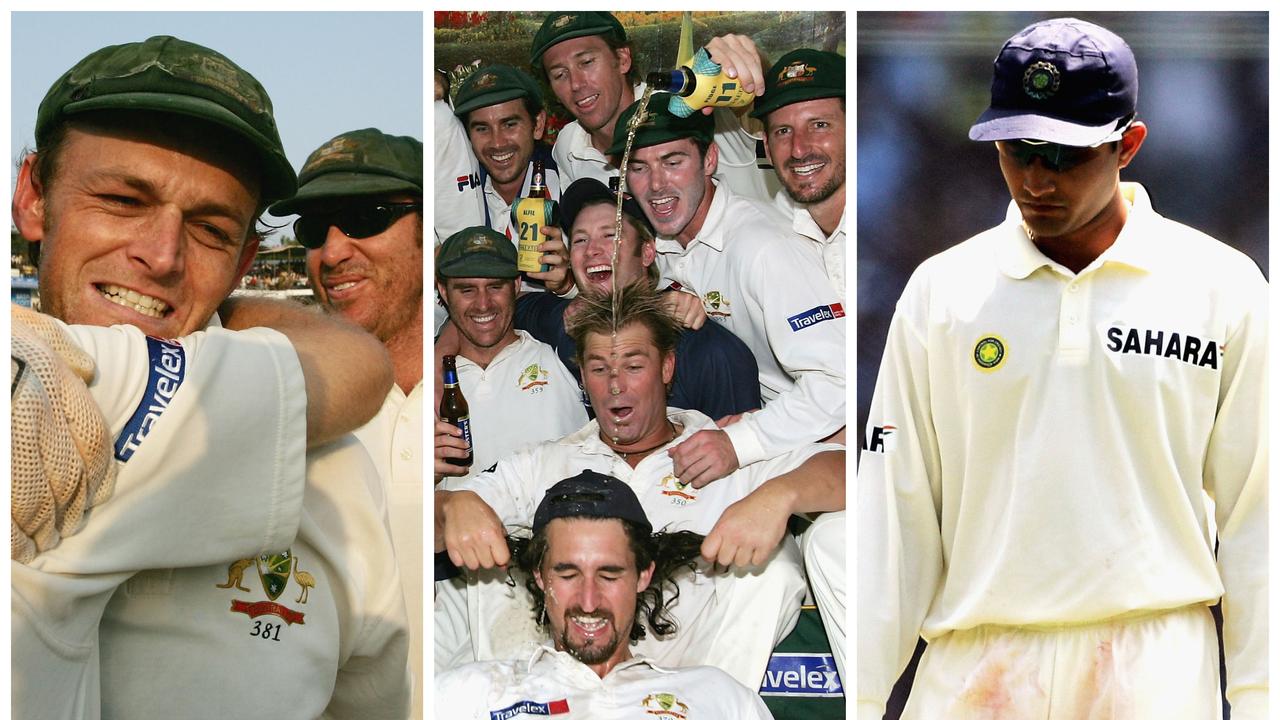In the final part of a three-part series on foxsports.com.au, Australia legends Adam Gilchrist and Jason Gillespie reflect on capturing the Border-Gavaskar Series in Nagpur in 2004.
Having escaped with a draw in Chennai, with no small hand from the weather gods, Australia found itself on the brink of conquering cricket’s final frontier nearly 19 years ago.
In 2004, holding onto a 1-0 lead having won in Bangalore, Australia was just one win – or two draws – away from winning a Test series in India for the first time since 1969.
India appeared to be in the ascendancy in the second Test before the Australians dug deep on days three and four to force a fifth – a day which never happened due to overnight rains that waterlogged the outfield.
Watch Australia’s Tour of India. Every Test & ODI live & ad-break free during play on Kayo. New to Kayo? Start your free trial now >
The temptation, especially in 2004, might’ve been to get back into the nets, play a tour match, work hard and search for the answers to prevent another close call.
Instead, coach John Buchanan set his troops free.
PART ONE: ‘Damaged goods’:Inside the ‘personal’ torment and genius switch behind finest Aussie hour
PART TWO: Australia’s seismic Clarke arrival and shock Gilly gamble that triggered Indian ambush
Rewind: Aussies win in India in 2004! | 04:44
“We had a break between Tests. Buck (Buchanan) said he’s going to cancel the tour match we were going to play and let everyone do what they want for three or four days,” Adam Gilchrist recalls for foxsports.com.au.
“Some blokes went to the Maldives. I went to Singapore to see (wife) Mel and our recently-born daughter, who was born just before I left. I got some time there.
“It was just amazing – Haydos (Mathew Hayden) went fishing and surfing down south.”
The group reconvened for the third Test in Nagpur, where players were also reunited with Ricky Ponting, who broke his thumb just weeks before the Border-Gavaskar series.
Gilchrist remembers the break in the midst of the high-pressure series as being the perfect call from Buchanan, a polarising coach not without his detractors.
“When everyone came back together it just felt like the start of a fresh, new trip,” Gilchrist remembers. “Everyone was re-energised, and buzzing, and happy to see each other and catch up again.”
He adds: “It was a bit of a masterstroke that, from Buck.
“A risky play back in those days to say ‘oh, no, we don’t need the practice.’”
The series scoreboard was in Australia’s favour but another stern test was expected in Nagpur, where Australia was just rolled for 177 and 91 last week, albeit at the new stadium.
All but four of 20 Australian wickets fell to spin with Ravichandran Ashwin and Ravindra Jadeja exposing the tourists’ well-known frailty against the tweaking ball.
In 2004, Anil Kumble and Harbhajan Singh were thriving on similar surfaces – which is why jaws hit the floor when the covers were rolled back from the Nagpur wicket.
“There seemed to be some sort of dispute,” Gilchrist says. “Whatever the case, I got the surprise of my life when we turned up on game day and it was a green seamer.”
Jason Gillespie couldn’t believe his eyes – but he wasn’t about to start asking any questions.
“I wasn’t going to turn that down,” Gillespie tells foxsports.com.au. “The seamers weren’t going to turn down that opportunity down.
“We got a bit lucky … There was some disagreement between the groundsmen and that India team.
“They produced a surface that probably suited us better and, look, I got nine wickets in India in a Test match, which probably tells you it offered plenty for the seamers.”
No country is exposed to more criticism about pitch curating than India, and this was no exception. Only it was those within Indian cricket that were said to be furious, instead of the tourists, as is often the case.
The story goes that India’s captain Sourav Ganguly was so furious, and had such a stern disagreement with curators, that he boycotted the Test match.
“We’re playing at home, where our main strength is spin. But this kind of wicket takes that advantage away from us,” Ganguly told reporters at the time.
“I asked the groundsman a few days ago for the grass to be removed but he’s not done much. The curator here is the man in charge and he has his own ideas.”
Curator Kishore Pradhan defended his decision at the time, telling Reuters “I don’t see what all the fuss is about.”
Indeed, Ganguly went on to pull out, along with star spinner Harbhajan.
Years later in his autobiography, Hayden said the wicket reminded him of the Gabba, and accused Ganguly and Harbhajan of having an “acute case of Greentrackitis”.
“When Ganguly and Harbhajan went out to see the deck a couple of days before the game, they looked like farmers inspecting crops after a hail storm,” Hayden wrote. “We predicted neither would play, and they did not.
“Ganguly withdrew with a leg-muscle injury that flared up suddenly, and Harbhajan had an even more sudden dose of food poisoning.
“We put their ailments down to acute cases of ‘greentrackitis’, where you develop a severe intolerance to green wickets likely to give you nothing as a spin bowler and plenty of headaches as a batsman.”
Scans reportedly showed that Ganguly did in fact have an injury, and he went on to miss the fourth Test as well.
Gillespie says: “We heard he (Ganguly) was a bit annoyed at the surface that was presented, but we couldn’t control what India was doing.
“All we could control was what we could, and we did that quite well.”
The track was so favourable for seam bowling that Gilchrist says he was even tempted to bowl first, but ultimately had second thoughts and elected to bat.
It proved the be the right call – Hayden and Justin Langer saw off the new ball, and the middle-order took advantage with Damien Martyn (114), Darren Lehmann (70) and Michael Clarke (91) all firing.
With 398 on the board, Australia was in a healthy position. It was about to become insurmountable, bringing the nation’s wildest dreams closer to reality.
Gillespie and Glenn McGrath blew away the Indian top-order on the seam-friendly wicket, with Aakash Chopra, Virender Sehwag, Rahul Dravid and Sachin Tendulkar all failing to make more than 25.
Shane Warne chipped in with two wickets, dismissing VVS Laxman (13) and Parthiv Patel (20) cheaply before Gillespie mopped up the tail.
“We all bowled well,” Gillespie says, eager to stress the involvement of his 10 teammates.
“I got the chocolates from a wicket-taking point of view. But McGrath and (Michael) Kasprowicz were outstanding in that game, as was Shane.
“Shane bowled beautifully in that game. But Glenn and Kasper were top drawer.”
Gillespie finished the innings with 5-65, India was out for 185, and Australia, incredibly, had one hand and four fingers on the Border-Gavaskar Trophy.
With more than two-and-a-half days left to play, Australia opted to bat India out of the contest. Fresh in the mind, no doubt, was enforcing the follow-on at Eden Gardens three years earlier and somehow losing.
But with the foot back firmly on India’s throat, Australia wasn’t going to relent this time.
Martyn and Clarke dominated again with scores of 73 and 97, while Simon Katich was out for 99, making him the third Australian dismissed in the nineties for the Test.
But it mattered little. India was set an impossible 543 runs to win, and about five sessions to survive for a draw.
The hosts didn’t even last two.
Australia had choked the life out of India, who collapsed without a whimper. Five of its top six batters were out for single digits, while only Sehwag made a half century.
Gillespie was the star again, claiming 4-24 to make it nine wickets for the Test, while McGrath, Kasprowicz and Warne all took two wickets each.
India was out for 200.
The 11 Australians had won the Test, conquered cricket’s final frontier, and earnt world cricket’s admiration, both then and forever.
Gilchrist, a reluctant stand-in captain for the injured Ponting, had pulled it off with the help of Australia’s golden era of players – and some luck.
But there was someone else who wasn’t there, but Gilchrist felt shared a massive part in the victory having taken Australia so close just three years earlier.
“Straight after the game, I remember a burning desire to try and ring Tugger (Steve Waugh),” Gilchrist says. “Because he played such a huge role in us learning to embrace India in a different mindset.
“It felt like his fingerprints were all over it, to an extent. So I managed to get him on the phone pretty quickly.”
He adds: “Then we had a very decent celebration that probably went for two days too long and we ended up losing the next Test in two days. That was probably more to do with the pitch than anything else.”
Now nearly 20 years on, the series remains one of, if not the greatest Test achievement of the Australian cricket team.
For context, since walking off the field in Nagpur in 2004, India has only lost eight Tests at home, winning 57. England is the only team to win a Test series in India since 2004, triumphing 2-1 in their 2012 meeting.
As for Australia, the nation has won just one of its 16 Tests in India since claiming the Border-Gavaskar Trophy on foreign soil.
Needless to say, the 2004 series remains one of the most cherished memories in Australian sport – especially for those who were included.
Asked for his most treasured memory of the series, Gilchrist points to two iconic photos that he “holds dear” to his heart.
The first graces the front-cover of his autobiography True Colours, showing Gilchrist beaming after Australia won in Bangalore.
“Most Test players finish the Test and you have five days’ growth, little bit of stubble, you’re exhausted, you’ve got sweat all over you, bit of sun cream – but it was just me, a smiling photo, a thought of what might be achievable after that first win,” he says.
The second is from Nagpur moments after Martyn took the catch that made Australia’s series victory official.
“There’s a photo of myself, JL (Justin Langer), Kato (Katich), Dizzy (Gillespie) all sort of half arm-in-arm – I think Dizzy has a stump in the air – and we’re charging towards where Marto had taken the catch,” he says.
“It’s just the image that I think sums up that whole campaign, which seems like it took years to fulfil, but that was the culmination of that core group.
“I know that photo doesn’t include everyone that was the heartbeat of it, but that photo sums up that group. So really special there.”
As for Gillespie, he fondly recalls celebratory drinks in the Nagpur dressing rooms, which shifted to more drinks at the team hotel.
There, he remembers the feeling of achievement sinking as the team revelled in both each other’s company, and immense pride in their work.
“I just remember, we were all sitting around a big table, we had waiters around just bringing us drinks, there’s food and drink,” he remembers.
“I suppose winning in India is such a hard thing to do … It was an immense effort from the boys and we all contributed strongly to it. Just the camaraderie and the pride in each other in being able to achieve something pretty special.
“Whether it was being in the dressing rooms or sitting around the hotel in Nagpur celebrating the series win, it was just a pretty special tour.
“It was pretty cool. It was great for us to be able to achieve that.”







